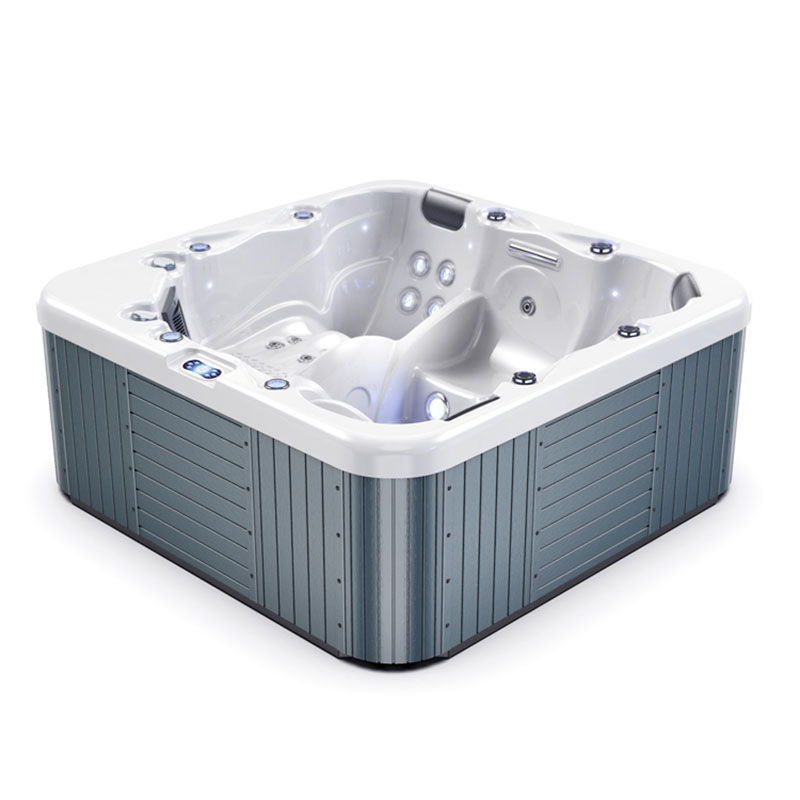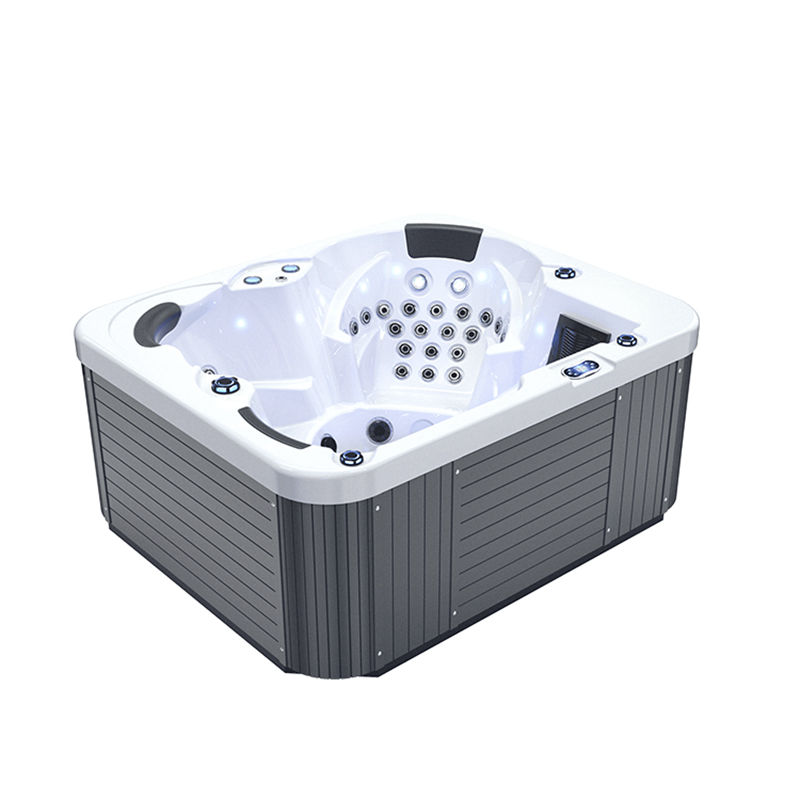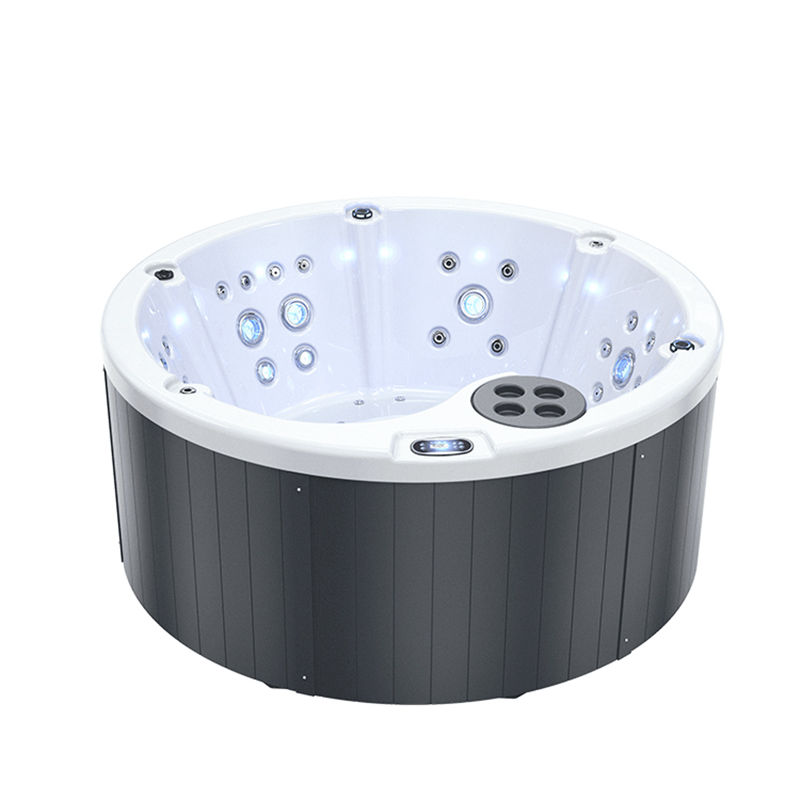Drainage from outdoor whirlpool hot tubs has raised many concerns, particularly regarding its potential impact on lawns and other vegetation. Whirlpool hot tub drainage contains a variety of chemicals, such as chlorine, bromine, disinfectants, and pH adjusters, all of which may have potential environmental impacts. Many users are concerned about whether discharging this drainage directly into lawns or gardens could harm the health of their grass.
This article will delve into the composition of outdoor whirlpool hot tub drainage, its potential impact on lawns, and how to effectively manage drainage to ensure water utilization without negatively impacting lawns or the environment.
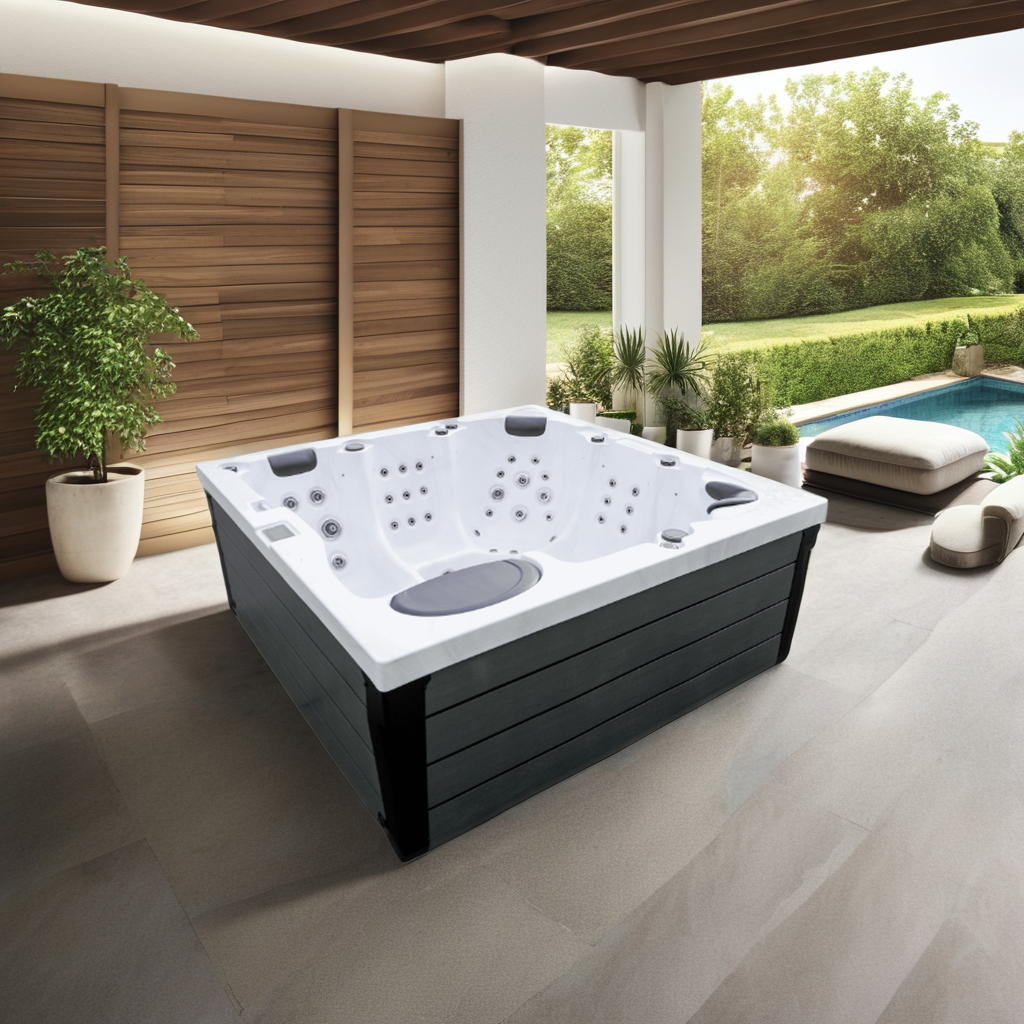
What are the components of outdoor whirlpool hot tub water?
Before discussing whether drainage is harmful to lawns, it's important to first understand the composition of the water discharged from outdoor whirlpool hot tubs. Whirlpool hot tub water quality typically requires rigorous conditioning and maintenance to prevent the growth of harmful bacteria, algae, and other contaminants. To achieve this goal, the following chemicals are commonly added:
1. Chlorine and Bromine
Chlorine and bromine are the most commonly used disinfectants, effectively killing bacteria and microorganisms in water. Chlorine exists in the form of hypochlorous acid, while bromine acts similarly to chlorine and is used to maintain clean water. While these chemicals are safe for direct contact with humans and animals, their long-term effects on plants and soil can be problematic. Excessive amounts of chlorine and bromine released onto lawns can cause turfgrass to turn yellow or die.
2. pH Adjusters
To maintain balanced water quality, users typically need to regularly adjust the pH of their water. Whirlpool hot tub water often uses an alkaline or acidic adjuster to maintain the pH within the appropriate range to prevent corrosion and minimize equipment damage. Excessively high or low pH levels can significantly affect plants and lawn soil, disrupting the soil's acid-base balance.
3. Alkalinity and Hardness Adjusters
Alkalinity and hardness adjusters are two other types of chemicals used to maintain balanced water quality. They can help prevent rapid changes in outdoor whirlpool and hot tub water quality, maintaining a comfortable user experience. However, these conditioners often contain carbonates or other minerals. Excessive amounts of alkalinity and hardness conditioners discharged into lawns can increase soil salinity, potentially affecting plant growth.
4. Foam Removers and Other Additives
To reduce foam in the tub, users sometimes use foam removers. These chemicals are primarily composed of silicones or similar substances. While these substances may not directly harm the lawn, if they accumulate in excess, they can clog the soil, hindering proper respiration and water absorption by plant roots.
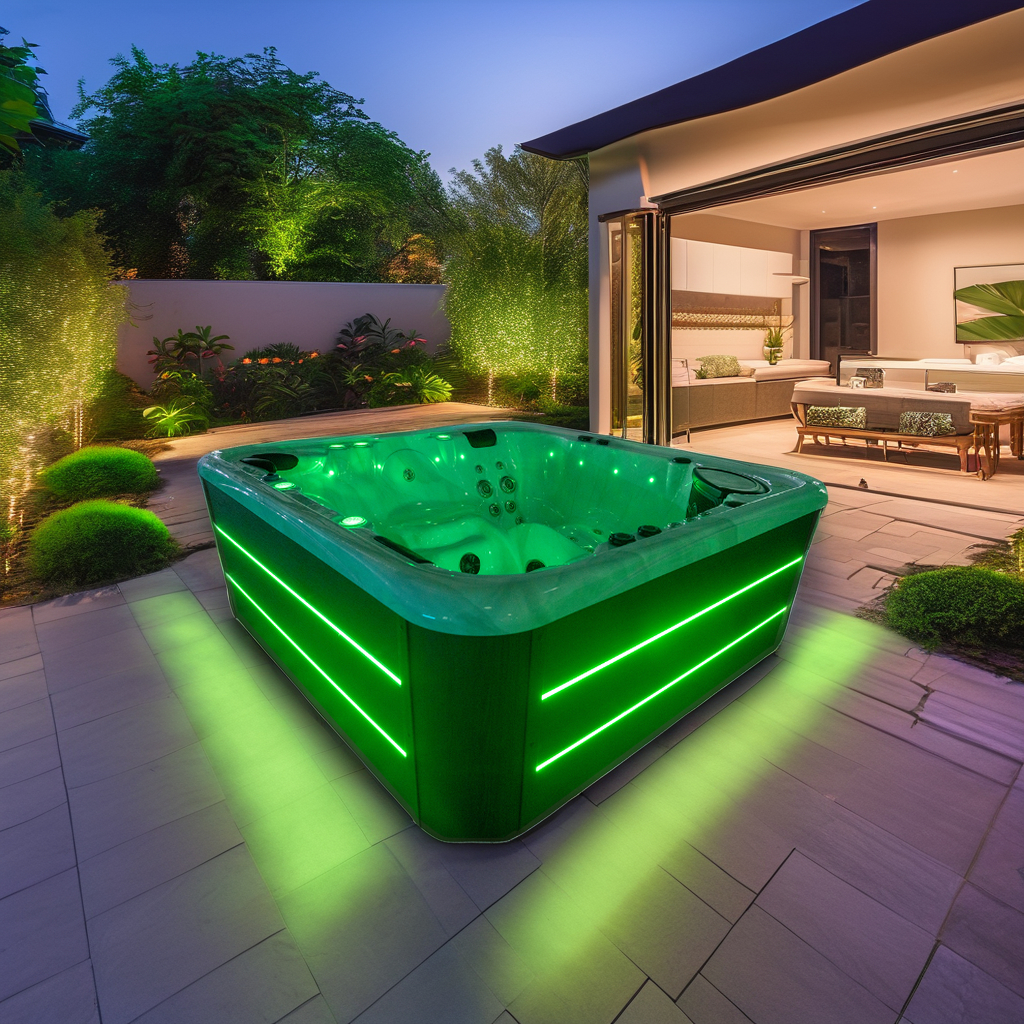
Is outdoor whirlpool and hot tub water harmful to lawns?
Draining whirlpool and hot tub water onto lawns can have varying degrees of impact on the lawn and surrounding vegetation, depending on the concentration of chemicals in the drain, the frequency of discharge, and the type of lawn. The following are some of the main potential impacts.
1. Chlorine and Bromine Toxicity
As mentioned earlier, while chlorine and bromine play an important role in disinfecting whirlpools and hot tubs, they can be toxic to lawns when discharged in high concentrations. Plants have a low tolerance for chlorine. Excessive chlorine can damage grass roots and inhibit photosynthesis, causing the lawn to yellow or even die.
Although bromine is milder than chlorine, its cumulative effects are still present. Continuous discharge of bromine-containing water can lead to increased bromine concentrations in the soil, ultimately affecting plant growth. Bromine absorption by plants can affect their nutrient metabolism, particularly for more delicate grass species, which can have significant negative effects.
2. Impact of pH on Soil
Plant growth generally depends on a stable soil pH. Most lawn species prefer a pH between 6 and 7. Excessively acidic or alkaline discharged water can affect lawn health. Excessively acidic water (pH below 6) increases the solubility of harmful metals in the soil, making it easier for plants to absorb toxic elements like aluminum and manganese, leading to lawn damage. Excessively alkaline water (pH above 8) impairs plant nutrient absorption and hinders normal lawn growth.
3. Salt Accumulation
Whirlpool hot tub water conditioners contain alkalinity or hardness regulators, which can leave salt deposits in the soil. Over time, salt accumulation in the soil can affect the lawn's ability to absorb water and nutrients, especially if the water is frequently drained. Excessive salt levels can deteriorate soil structure and sap the lawn's vitality.
4. Hot Water Damage to Roots
Although the water from a whirlpool hot tub may be cooled by the time it is drained, if it remains warm at the time of discharge, it can cause heat damage to lawn roots. Lawn roots are very sensitive to temperature fluctuations, and extreme temperatures can cause desiccation, damage, or even death. Therefore, the temperature of the drained water must be carefully considered to ensure it does not cause heat damage to the lawn.
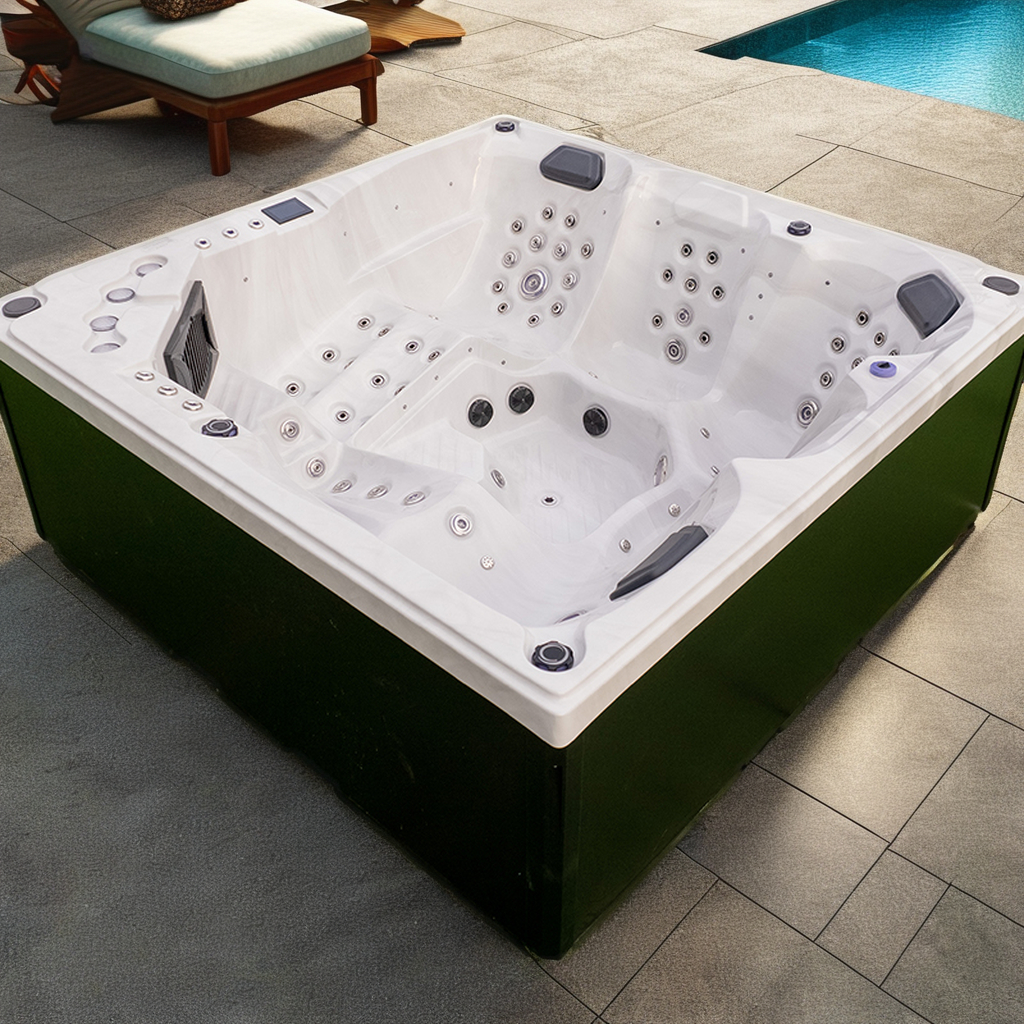
How to Discharge Whirlpool Hot Tubs Properly?
To prevent damage to lawns caused by outdoor whirlpool hot tub discharge, users can take effective measures to manage and treat the water.
1. Control Chemical Concentration
Before discharging the water from a whirlpool hot tub, it is best to test the chemical concentrations in the water, particularly for chlorine and bromine levels. Ensuring chlorine levels are within safe limits (typically below 1 ppm) can reduce plant damage. If chemical concentrations are too high, dilution or delayed discharge is recommended. For example, discontinue chlorine or bromine use for a period of time to allow the chemicals to evaporate naturally before draining.
2. Natural Water Purification
Another effective method is to allow drainage water to undergo natural purification processes before entering the lawn. For example, diverting drainage from an outdoor whirlpool hot tub to a gravel or sand filter bed, where physical filtration and biological purification reduce the chemical content of the water. This can reduce the direct harm of drainage to the lawn.
3. Distributed Discharge
Distributed discharge is safer than discharging a large amount of whirlpool hot tub water all at once into the same lawn area. By adjusting the drainage pattern, the water flow can be distributed over a larger area, preventing excessive accumulation of chemicals in a single area and potentially stressing the lawn. Furthermore, distributed discharge promotes natural evaporation and soil dilution, further mitigating potential negative impacts.
4. Use Chemical-Free Water Treatment
To prevent chemicals from affecting your lawn, consider using chemical-free water treatment methods, such as an ozone generator or UV sterilizer. These methods keep the whirlpool water clean without adding chemicals, thus reducing the negative impact of drainage on your lawn.
5. Recycle the Drain Water
If the discharge water from your outdoor whirlpool is low in chemicals and relatively clean, consider recycling it for garden watering or cleaning outdoor equipment. This not only reduces waste but also prevents potential damage to your lawn.
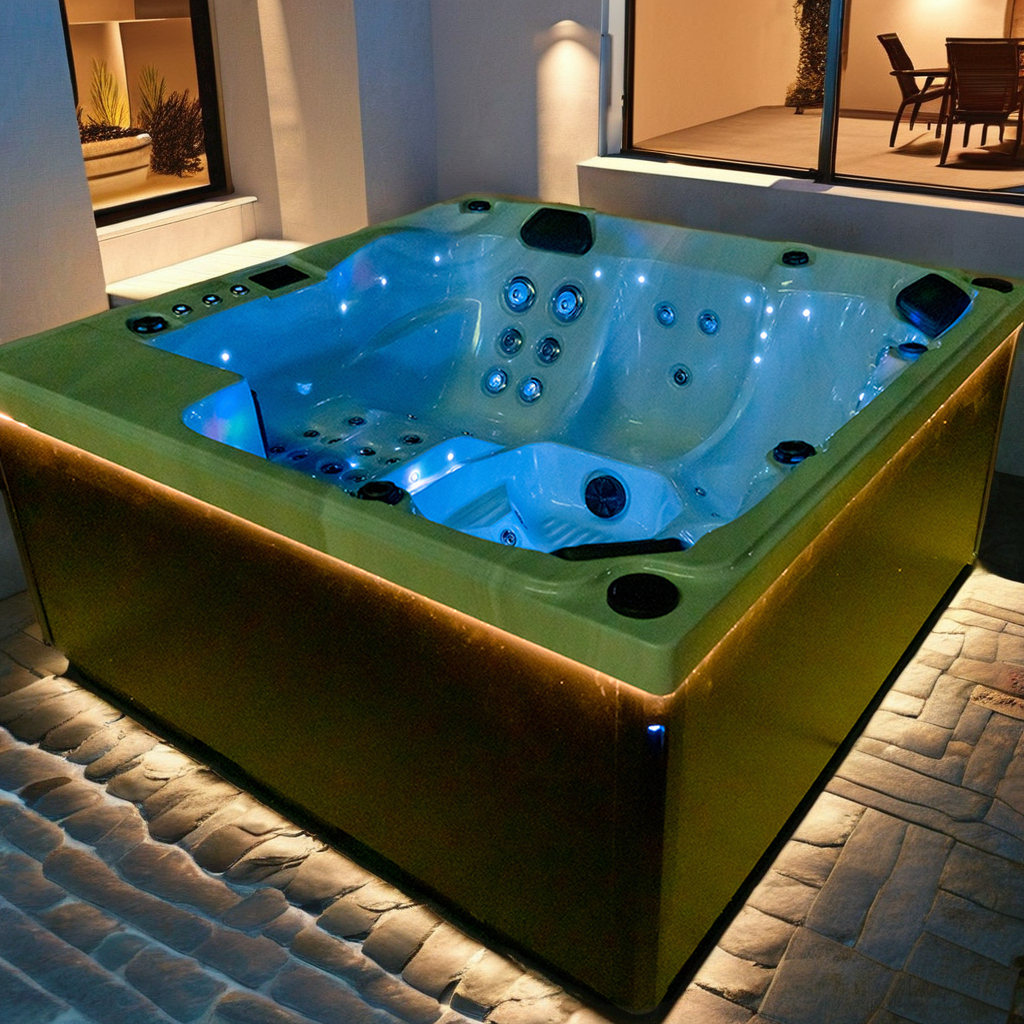
What is the payment and delivery term when purchasing from your company?
Our payment term is T/T – 30% deposit in advance and 70% before delivery. We typically ship from Huangpu Port, China, and delivery time depends on the order volume and customization requirements. With more than three decades in the industry, we are a trusted supplier known for on-time delivery, competitive pricing, and professional customer support. We also provide fast quotes for any model you wish to order.


